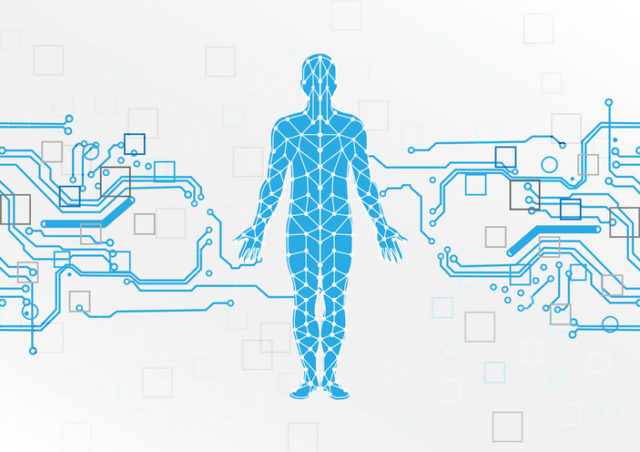
Over the past decade, artificial intelligence (AI) has revolutionized the field of medical imaging, driven by the immense potential to improve diagnostic accuracy and enhance the workflow of radiologists. With an abundance of imaging data available for training, AI algorithms have been developed and refined to review patient scans and help flag potential issues for radiologists. This integration of AI in medical imaging holds enormous promise, particularly in the realm of population health, where it enables more effective screening and early detection of diseases, ultimately improving patient care on a larger scale. However, the journey has not been without hurdles, including the need to demonstrate a return on investment (ROI) for healthcare institutions to justify the commercial adoption of AI tools in medical imaging.
Ensuring optimal algorithm performance
One significant challenge in using AI in medical imaging has been ensuring optimal algorithm performance. Achieving both high sensitivity and specificity simultaneously is a demanding task, as false positives could disrupt radiologists’ workflow and lead to potential diagnostic errors. Extensive efforts have been made to improve algorithm training with larger datasets. Imaging protocols and devices are relatively similar, making it easier for well-trained algorithms to perform consistently across varied, unseen data. Over time, institutional skepticism around the usability of algorithms in imaging has decreased, with radiologists’ increased confidence in results generated by AI.
Increasing productivity
Another hurdle was in optimizing radiologists’ workflow by seamlessly integrating AI into existing systems. Key improvements were made to reduce additional clicks or widgets and to reorganize Picture Archiving and Communication System (PACS) worklists to prioritize positive cases. However, there was limited adoption of commercially available imaging AI products, mainly due to financial and ROI considerations and the broad perception that existing systems were sufficient. Despite these challenges, AI has shown immense promise in increasing radiology productivity, acting as a “second reader” to aid in accurate diagnoses, particularly in fields such as pulmonary nodules and breast imaging.
Data protection and interoperability
In addition to workflow optimization, IT integration posed its own set of hurdles, including patient data protection and managing multiple AI vendors’ platforms. To protect patient privacy, tools for anonymization were developed while enabling access to Digital Imaging and Communications in Medicine (DICOM) images for AI algorithms. In terms of interoperability, the marketplace paradigm offers a solution by allowing various imaging AI vendors to integrate into existing solutions marketplaces that service healthcare organizations. This approach simplifies the integration process, streamlines operations and minimizes IT complexities for healthcare institutions.
Breakthroughs in early detection with AI
Today, by harnessing the power of AI algorithms, medical images such as X-rays, CT scans, and MRIs can be analyzed with remarkable speed and accuracy. These breakthroughs enable healthcare providers to identify abnormalities and diagnose conditions at their earliest stages when interventions are most effective. For example, AI has demonstrated success in early detection of prostate cancer, breast cancer, lung cancer, and cardiovascular diseases, leading to improved survival rates and better patient outcomes.
The diagnostic advancements in medical imaging have far-reaching implications beyond individual patient care. By enabling early detection and intervention strategies, medical imaging can help address critical public health challenges such as cardiovascular diseases. For instance, cardiac imaging techniques like echocardiograms and cardiac CT scans can aid in identifying early signs of heart disease in a large population. This allows healthcare providers to implement preventive measures, lifestyle interventions, and targeted treatments to reduce the burden of cardiovascular diseases and improve the overall health of communities. The implementation of early detection strategies in medical imaging can play a vital role in cost savings for health systems and enhancing population health by effectively tackling public health concerns and promoting better overall health outcomes for communities.
Streamline workflows
In addition to its diagnostic capabilities, AI holds the potential to streamline the workflow of radiologists and other healthcare professionals involved in medical imaging. By automating repetitive and time-consuming tasks, AI algorithms can free up valuable time for healthcare providers, allowing them to focus on more critical and complex cases. For example, new research suggests adjunctive AI software can significantly improve the detection of incidental pulmonary embolism (IPE) on chest CT scans and can shave days off the time it takes to arrive at a diagnosis. AI’s applications in this area are diverse and impactful. It can assist in the triage of urgent cases, prioritize the order of image interpretation, and even generate preliminary reports, all of which enable radiologists to work more efficiently and provide timely diagnoses for patients.
Predicting treatment responses for precision medicine
Furthermore, AI’s potential impact on personalized medicine is highly promising. Through the analysis of extensive patient data, including medical images, genetic information, and clinical records, AI algorithms can discern patterns and correlations that aid in predicting treatment responses and optimizing personalized treatment plans. This personalized approach to medicine can lead to more targeted and effective therapies, minimizing the risk of adverse effects and ultimately improving patient outcomes.
Demonstrating clear ROI
Despite the numerous advancements and potential benefits of AI in medical imaging, there are still challenges that need to be addressed. The ultimate challenge for the broader adoption of AI in medical imaging remains the same: demonstrating to healthcare institutions that it provides a clear ROI. Justifying the commercial investment in AI tools, pursuing reimbursable CPT codes, and showcasing widespread use will be essential steps toward enhancing ROI and facilitating the deeper integration of AI products across all medical departments in which imaging plays a critical role in patient healthcare.
Healthcare professionals need to understand how AI arrives at its decisions to trust and effectively use these tools. Efforts are being made to develop interpretable AI models and establish guidelines for their ethical and responsible use. Data privacy and security are also critical considerations in the adoption of AI in medical imaging. Patient data, especially medical images, contain sensitive and private information that needs to be protected. Striking a balance between data sharing for training AI models and ensuring patient privacy is a complex task that requires robust data anonymization and encryption techniques.
The rapid evolution of AI in medical imaging has showcased its transformative capabilities in healthcare. With ongoing progress and the resolution of existing challenges, AI has the potential to significantly enhance diagnostic accuracy, streamline workflow, facilitate personalized medicine, and ultimately improve patient outcomes. Moreover, as healthcare institutions strive to demonstrate a return on investment (ROI) and prioritize population health, AI’s integration into medical imaging holds promise for generating tangible benefits on both fronts. As AI continues to mature and gain widespread acceptance, it is poised to greatly advance the field of medical imaging and usher in a new era of healthcare.
Photo: mrspopman, Getty Images








